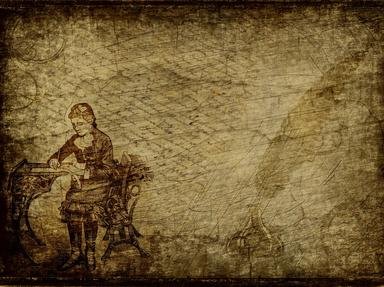Quiz Answer Key and Fun Facts
1. To what does the title, "Eleven Rings" refer?
2. Chapter 2 is entitled "Jackson's Eleven" and relates the basic points of Phil's philosophy. To what two Eastern thought systems does he make several references in this chapter? Hint: think riddles and Lao Tzu.
3. Chapter 3 is titled "Red." Around which NBA coach, under whom Jackson played and earned two rings with the Knicks, does this chapter revolve?
4. In Chapter 5 of "Eleven Rings," Phil Jackson discusses the basketball strategy he adapted from Tex Winter's team philosophy, which Phil used to such success as a coach. What is the name of this geometrical system used by Jackson's teams in their winning ways?
5. In Chapter 6, "Warrior Spirit," Jackson touches on the philosophy and world view of a Native American society of the north central areas of the U.S., including Montana, where Jackson was born and spent much of his youth, and North Dakota, where he graduated high school and played college basketball. As a matter of fact, the mascot of the University of North Dakota is a reference to this people. By what name does Jackson refer to this tribe?
6. In Chapter 9, "Bittersweet Victory," Jackson relates a trip he took his team on to the office of his former New York Knicks teammate, a former Princeton All-American. The location was the nation's capital where the former basketball star was a United States Senator from New Jersey. Who was this Rhodes scholar who served in the Senate from 1979 to 1997?
7. Also in Chapter 9, Phil tells how he attempted to help his players achieve self-actualization by using his interpretation of the theory of hierarchy of needs, originated by one of the founders of humanistic psychology. Whose "The Farther Reaches of Human Nature" did Jackson cite for the key steps for reaching self-actualization?
8. Chapter 12 includes several references to Jackson's coaching of, and relationship with, an eccentric NBA icon who, despite his infamously erratic behavior, nonetheless played a key role on five title-winning teams. Sometimes called the NBA's all-time best rebounder, who was much of the subject of the chapter entitled "As the Worm Turns"?
9. In Chapters 11-13 ("Basketball Poetry", "As the Worm Turns", and "The Last Dance"), Jackson chronicles his accomplishment of coaching his team's second "Three-Peat." Which team did Phil Jackson lead to this notable achievement?
10. But Jackson would have one more three-peat in him. Beginning with Chapter 15, "The Eightfold Offense", and continuing into chapters 16, "The Joy of Doing Nothing", and 17 (title withheld), Phil chronicles his journey to titles in 2000, 2001, and 2002. Which team did he lead to this achievement?
Source: Author
shvdotr
This quiz was reviewed by FunTrivia editor
agony before going online.
Any errors found in FunTrivia content are routinely corrected through our feedback system.
